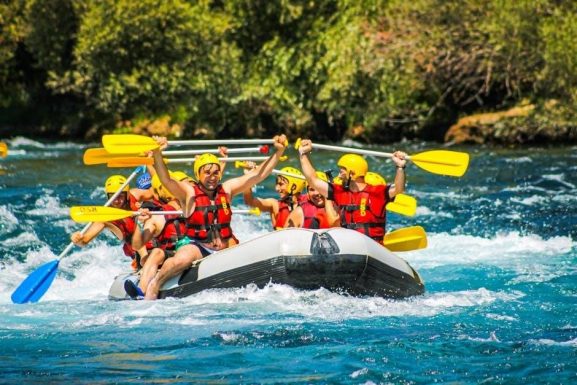White water rafting is an exhilarating outdoor adventure that combines thrilling river navigation with breathtaking natural scenery, offering an unforgettable experience for both novices and seasoned enthusiasts․
What is White Water Rafting?
White water rafting is a thrilling outdoor activity where participants navigate an inflatable raft through rough, turbulent river waters․ It involves teamwork, physical effort, and strategic coordination to maneuver the raft safely downstream․ The sport is characterized by fast-paced action, stunning natural landscapes, and an adrenalizing connection with nature, offering both excitement and a sense of achievement for enthusiasts of all skill levels․
History and Popularity of the Sport
White water rafting traces its origins to the mid-19th century, evolving from exploration to a popular recreational activity by the 20th century․ The development of inflatable rafts in the 1950s made it more accessible, sparking global interest․ Today, it is a beloved adventure sport worldwide, attracting enthusiasts with its adrenaline-pumping thrills, team-building dynamics, and connection with nature, making it a favorite for those seeking excitement and bonding experiences․
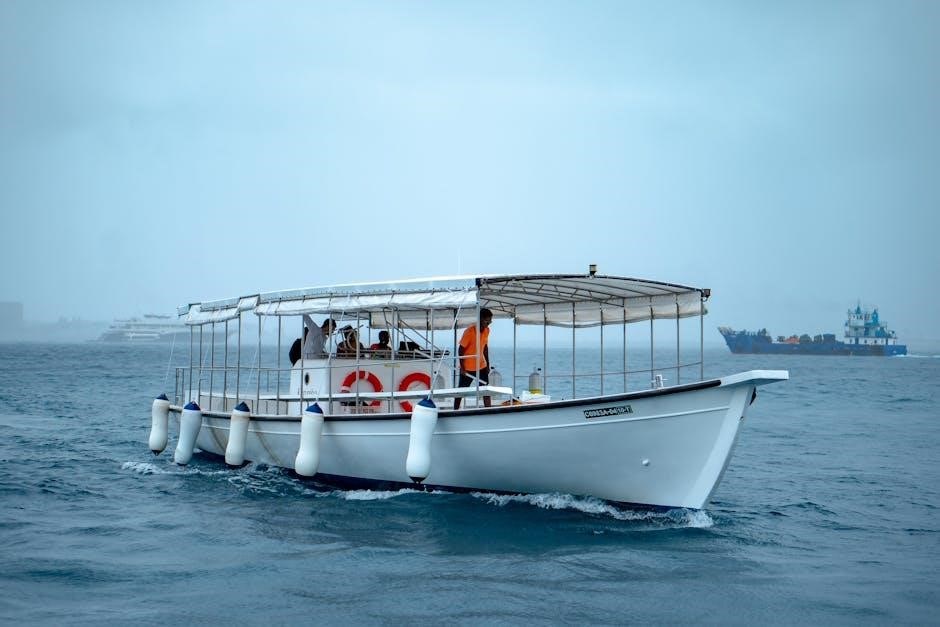
Safety First: Understanding River Dynamics
Understanding river dynamics is crucial for safe navigation, involving the study of currents, eddies, and rapids․ Recognizing these elements helps predict water behavior and ensure a secure journey․
Reading the River: Currents, Eddies, and Rapids
Reading the river involves understanding water dynamics, including currents, eddies, and rapids․ Currents are flowing water masses, while eddies are swirling water pockets․ Rapids are turbulent sections caused by obstacles․ Identifying these features helps navigate safely and effectively, ensuring a controlled and enjoyable rafting experience․ Observing water patterns, using landmarks, and staying alert are key to mastering river reading skills․
Safety Gear and Equipment Essentials
Safety gear is crucial for white water rafting․ A properly fitting Personal Flotation Device (PFD) is mandatory, as it keeps you afloat․ A helmet protects against impacts from rocks or raft collisions․ Wetsuits or dry suits help regulate body temperature, while sturdy footwear prevents slipping․ Ensure all gear is Coast Guard-approved and securely fastened․ Always inspect equipment before use to guarantee reliability and safety during the adventure․
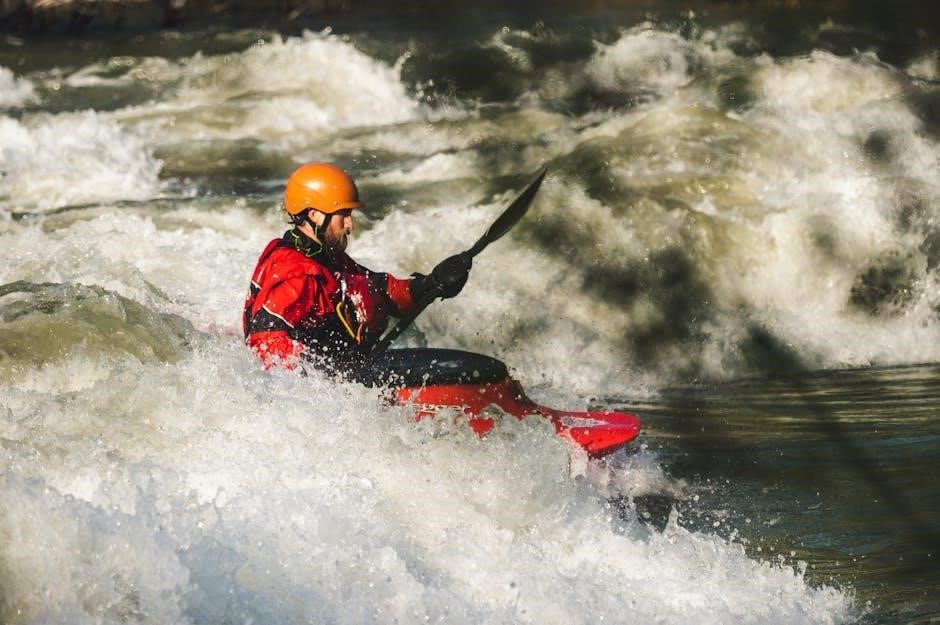
Types of Rapids and River Classification
Rivers are classified into rapids from Class I (calm) to Class V (extreme)․ Each class denotes water difficulty, obstacles, and required skill levels for navigation․
International Scale of River Difficulty (Class I-V)
The International Scale of River Difficulty rates rapids from Class I (calm, straightforward) to Class V (extreme, highly dangerous)․ Class I involves minimal currents, while Class V features violent rapids, steep drops, and intricate maneuvers․ This system helps rafters assess challenges, ensuring they choose routes suited to their skill levels and experience, enhancing safety and enjoyment on the water․
How to Approach Different Classes of Rapids
Approaching rapids requires skill and strategy․ Start by assessing the river and rapid class․ Scout or portage if unsure․ For Class I-II, focus on basic paddling and maneuvering․ Class III demands precise turns and eddying․ Class IV-V require expert-level navigation, teamwork, and quick decision-making․ Always prioritize safety, using proper techniques and communication to navigate challenges effectively․

Necessary Gear for White Water Rafting
Essential gear includes a sturdy raft, durable paddles, a properly fitting PFD, and protective gear like helmets and wetsuits to ensure safety and preparedness on the river․
Raft, Paddle, and Personal Flotation Device (PFD)
The raft is the backbone of white water rafting, designed for durability and buoyancy, typically made of sturdy rubber or inflatable materials․ Paddles are lightweight yet strong, often crafted from aluminum or fiberglass, ensuring precise control․ A properly fitting PFD is essential for safety, providing buoyancy and protection in case of unexpected immersion․ Together, these items form the core of a safe and enjoyable rafting experience․
Protective Gear: Helmets, Wetsuits, and Footwear
Helmets are crucial for protecting the head from impact and are essential for safety․ Wetsuits keep you warm in cold water and prevent abrasions․ Footwear provides stability and protects feet from sharp objects․ Each piece of gear plays a vital role in ensuring a safe and enjoyable white water rafting experience․
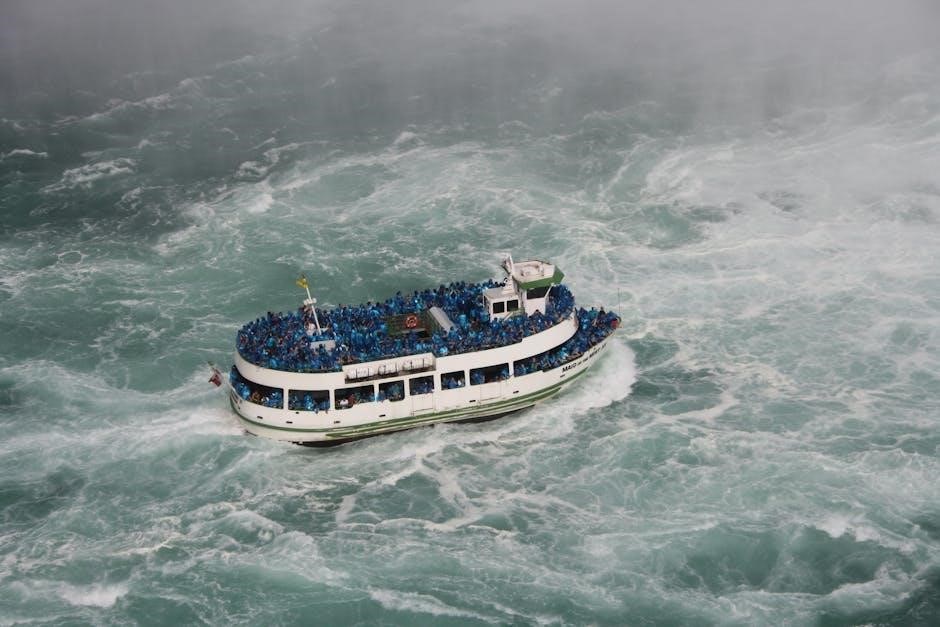
Health and Physical Considerations
White water rafting requires good physical health and stamina․ Participants should consult a healthcare provider to ensure they are fit for the activity’s demands․
Medical Precautions and Fitness Requirements
White water rafting demands physical stamina and good health․ Participants with heart conditions, epilepsy, or recent injuries should seek medical clearance․ A moderate fitness level is essential to navigate the raft and paddle effectively․ It’s crucial to disclose any medical conditions to guides to ensure safety and appropriate precautions during the adventure․
Preparing Your Body for the Adventure
Preparing your body for white water rafting involves building strength, endurance, and flexibility․ Focus on exercises that enhance core stability, cardiovascular fitness, and upper body strength․ Incorporate activities like swimming, cycling, or kayaking to improve paddling endurance․ Stretching and balance exercises can help prevent injuries․ Start training weeks in advance to ensure your body is ready for the physical demands of rafting․ Rest and proper nutrition are key to peak performance․
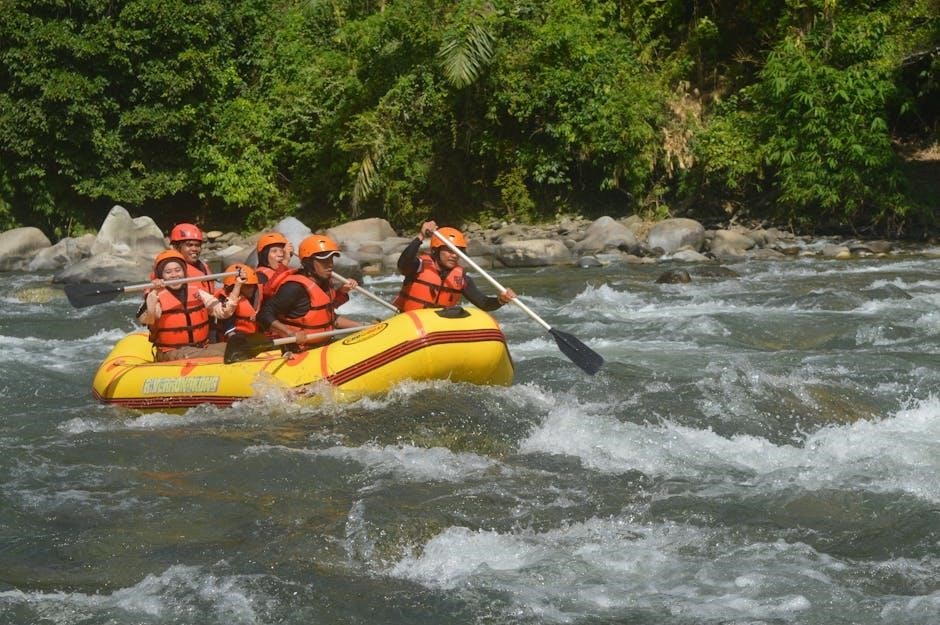
Choosing the Right River and Outfitter
Choosing the right river and outfitter is essential for a safe and enjoyable rafting experience․ Consider skill levels and river classifications․ Select a reputable outfitter with a strong safety record and experienced guides․
How to Select a Reputable Rafting Outfitter
When selecting a rafting outfitter, prioritize safety and experience․ Look for certifications from recognized organizations and check their safety record․ Read reviews and ask about their guide training․ Ensure they provide proper equipment and clear instructions; A reputable outfitter will tailor trips to your skill level and ensure a fun, secure experience․ Don’t hesitate to ask questions to confirm their expertise and reliability․
Factors to Consider When Choosing a River
When selecting a river for white water rafting, consider factors like difficulty class (I-V), water levels, and seasonal variations․ Check the distance from your location for convenience․ Evaluate weather conditions, water temperature, and access to permits․ Opt for rivers with scenic beauty or remote settings if solitude is desired․ Ensure the river suits your skill level and offers guide services for a safer, more enjoyable experience․
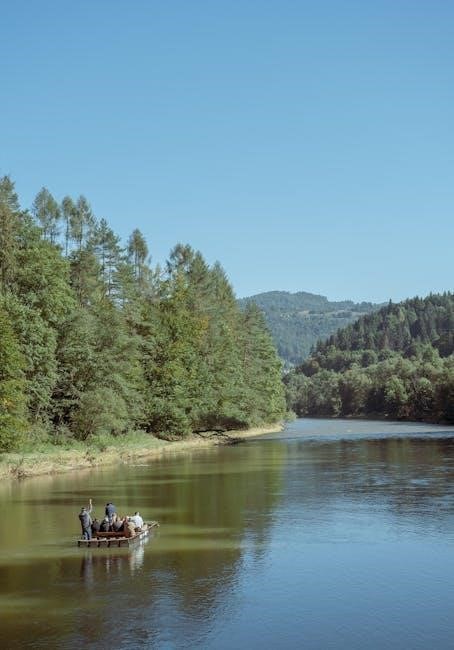
Planning Your White Water Rafting Trip
Plan according to weather, water levels, and seasonal availability․ Research permits, outfitters, and safety guidelines․ Create a checklist for gear, meals, and emergency supplies to ensure a smooth adventure․
Best Times of the Year for Rafting
The optimal rafting season varies by region․ In the Northern Hemisphere, peak season is typically May to September, with high water levels in spring․ Southern Hemisphere rafting peaks from December to March․ Water levels, weather, and snowmelt influence timing․ Plan trips during these windows for ideal conditions, ensuring safety and excitement․ Always check local river conditions and seasonal availability before heading out․
Checklist for a Successful Rafting Trip
Ensure a smooth adventure by packing essential gear: sturdy raft, paddles, PFDs, helmets, and wetsuits․ Wear quick-drying clothing, secure footwear, and bring sunscreen․ Carry a first aid kit, rescue rope, and water bottle․ Include snacks, extra clothes, and a whistle for emergencies․ Check weather and river conditions beforehand․ Don’t forget a dry bag for personal items and a headlamp for late trips․ Stay prepared and safe!

Navigating the River: Techniques and Commands
Master essential paddling techniques and key commands like “Forward!” or “Turn left!” to ensure a smooth, safe river experience for your team․
Basic Paddling Techniques and Team Coordination
Mastering basic paddling techniques is crucial for navigating the river effectively․ The forward stroke propels the raft, while the reverse stroke slows it down․ Turning involves synchronized paddling on one side․ Team coordination is essential, as every paddler must move in unison․ Communication and timing ensure smooth maneuvering through rapids․ Practice these skills to maintain control and harmony on the water․
Understanding Rafting Commands and Communication
Clear communication is vital for successful rafting․ Common commands include “forward,” “back,” “left,” “right,” and “stop․” Guides use hand signals for clarity in noisy environments․ Paddlers must respond quickly and in sync․ Miscommunication can lead to collisions or losing control․ Understanding commands ensures safety and effective navigation, making it essential for every team member to stay attentive and responsive during the adventure․

Building a Strong Rafting Team
Building a strong rafting team requires effective communication, coordination, and mutual trust․ Each member’s role is vital, fostering a collaborative environment for navigating challenges successfully․
Team Dynamics and Roles in the Raft
Team dynamics are crucial for success in white water rafting․ Each member plays a distinct role, from paddlers providing synchronized strokes to the guide steering the raft․ Effective communication, mutual trust, and seamless coordination ensure unity and safety․ Understanding individual responsibilities fosters a collaborative environment, enhancing the team’s ability to navigate challenges and enjoy the adventure together․ Strong teamwork is essential for overcoming rapids and achieving a memorable experience․
Tips for Collaborative Paddling and Decision-Making
Collaborative paddling requires clear communication, synchronization, and trust․ Assign roles to ensure tasks are divided evenly, fostering accountability․ Encourage active listening to avoid misunderstandings․ Use hand signals for silent coordination in loud environments․ Foster a culture of open dialogue to discuss challenges and strategies․ Practice timing and rhythm to maintain a unified paddle stroke, enhancing maneuverability․ Anticipate obstacles together, making quick, collective decisions to navigate safely and efficiently․
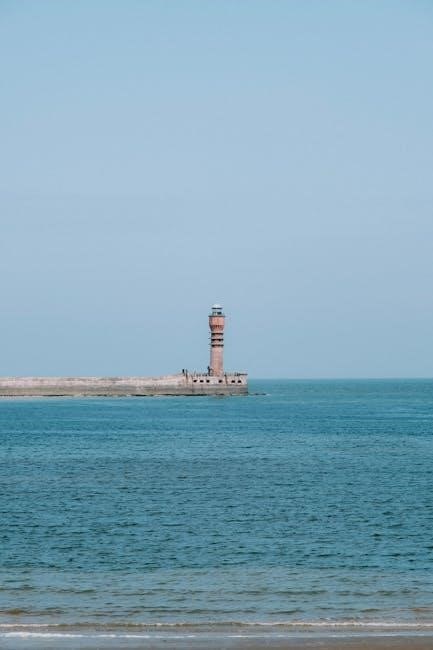
Environmental Impact and Best Practices
- Minimize waste and avoid single-use plastics to protect riverside ecosystems․
- Refrain from using harsh chemicals that can harm aquatic life․
- Respect wildlife habitats and avoid disturbing natural riverbeds․
- Follow local regulations and guidelines for sustainable rafting practices․
Minimizing Your Environmental Footprint
To minimize your environmental impact while white water rafting, focus on leaving no trace by packing light and removing all trash․ Use biodegradable products like soap and toothpaste to prevent water pollution․ Avoid disposable plastics and stay on designated trails to preserve riverbanks․ Refrain from disturbing wildlife or their habitats․ Support local conservation efforts by choosing eco-friendly outfitters and respecting protected areas․ Every small action helps protect the river ecosystem for future adventures, promoting responsible tourism and environmental stewardship․
Responsible Wildlife and Habitat Interaction
When engaging in white water rafting, it’s crucial to respect wildlife and their habitats․ Avoid disturbing or feeding animals, as this can disrupt their natural behaviors․ Keep a safe distance from nesting areas or sensitive ecosystems․ Refrain from removing plants or rocks, as these are vital to the river’s biodiversity․ Use eco-friendly gear to prevent chemical contamination․ By supporting conservation efforts and raising awareness, you help protect these environments for future generations․
Documenting Your White Water Rafting Adventure
Capture your thrilling experience with waterproof cameras or action cams․ Record high-quality photos and videos, ensuring memories last․ Use mounts for stable footage and consider hiring a photographer for professional shots․ Store extra batteries and memory cards to avoid missing key moments․ Share your journey creatively on social media platforms, inspiring others to explore the adventure․
Best Cameras and Gear for Capturing Your Trip
For capturing your white water rafting adventure, use waterproof action cameras like GoPros or DSLRs with waterproof housings․ Invest in sturdy mounts for secure attachment to rafts or helmets․ Use polarizing filters to enhance colors and reduce glare․ Carry extra batteries and memory cards to ensure uninterrupted recording․ Consider hiring a professional photographer for high-quality shots, ensuring your memories are preserved in stunning detail․
Sharing Your Experience on Social Media
Share your white water rafting adventure on social media to inspire others․ Use hashtags like #WhiteWaterRafting or #AdventureSeekers to connect with enthusiasts․ Post high-quality photos and videos, tagging locations and outfitters․ Engage with online communities to exchange tips and stories․ Create a compelling caption to highlight your experience, making it relatable and exciting for your followers․ This helps build a vibrant outdoor community and preserves your memories․
Embrace the thrill of white water rafting, challenge yourself, and cherish the unforgettable memories․ Step out of your comfort zone and experience nature’s raw beauty firsthand․
Overcoming Fears and Embracing the Adventure
White water rafting can be intimidating, but it’s also a transformative experience that builds confidence and resilience․ Start with calmer waters and gradual challenges to ease into the thrill․ Remember, fear is natural, but proper training and safety gear ensure a secure adventure․ Pushing past your comfort zone often leads to unforgettable memories and a sense of accomplishment․ Embrace the journey and let the river’s power inspire you․
Why White Water Rafting is a Must-Try Experience
White water rafting is an unparalleled adventure that combines adrenaline-pumping action with serene natural beauty․ It challenges you to step out of your comfort zone, fostering personal growth and unforgettable memories․ The thrill of navigating rapids, the camaraderie of teamwork, and the stunning landscapes create a unique experience that leaves you with a sense of accomplishment and a deeper connection to nature․ Try it once, and you’ll understand why it’s irresistible to so many adventurers worldwide․
